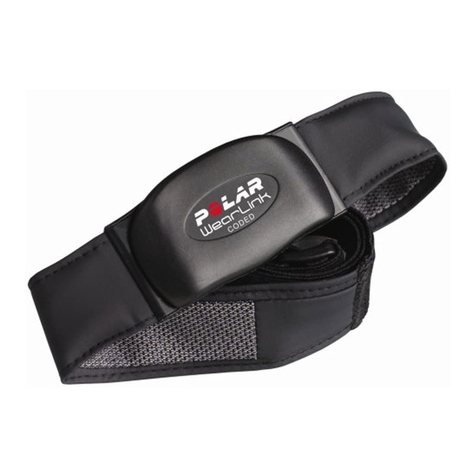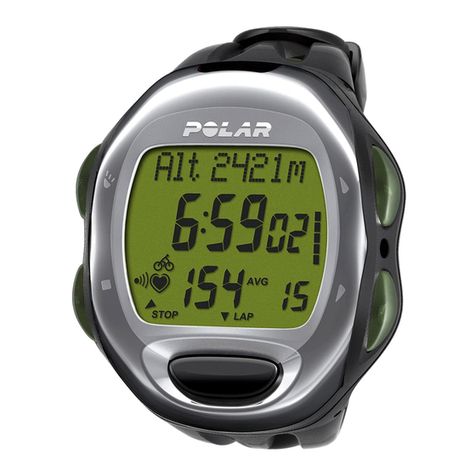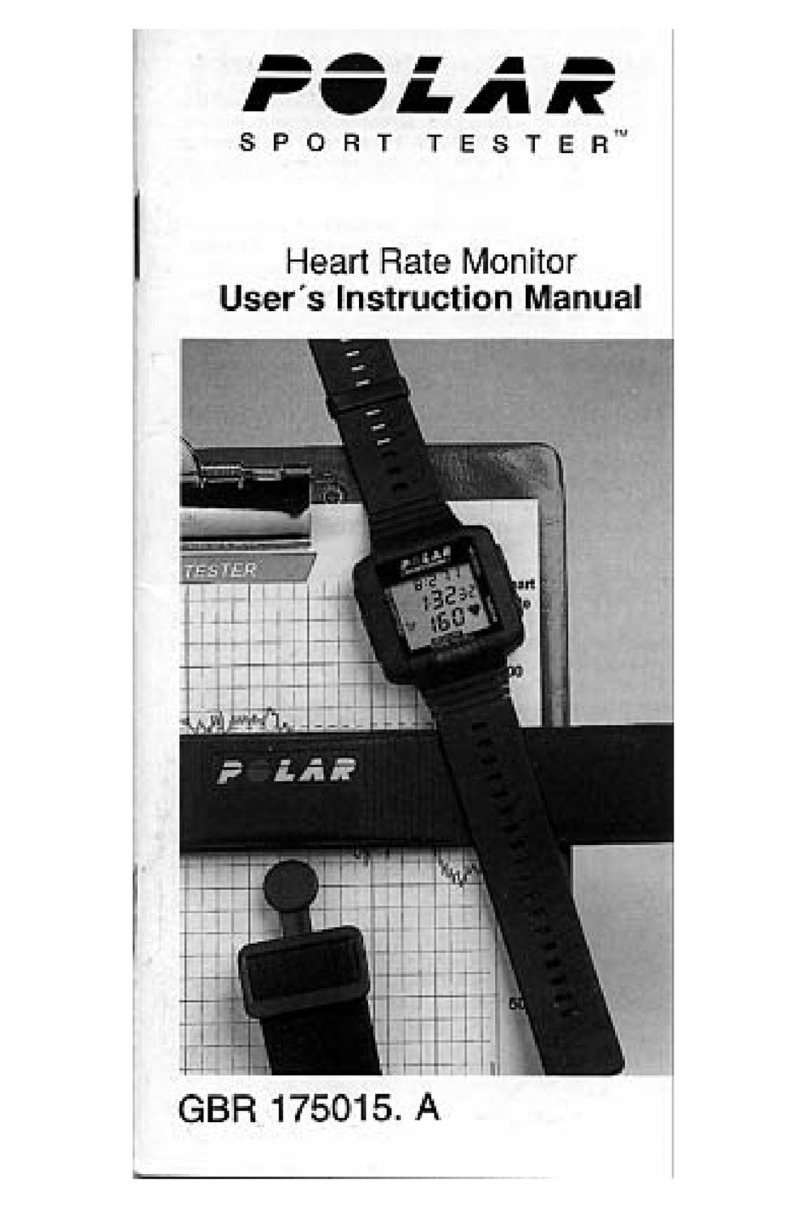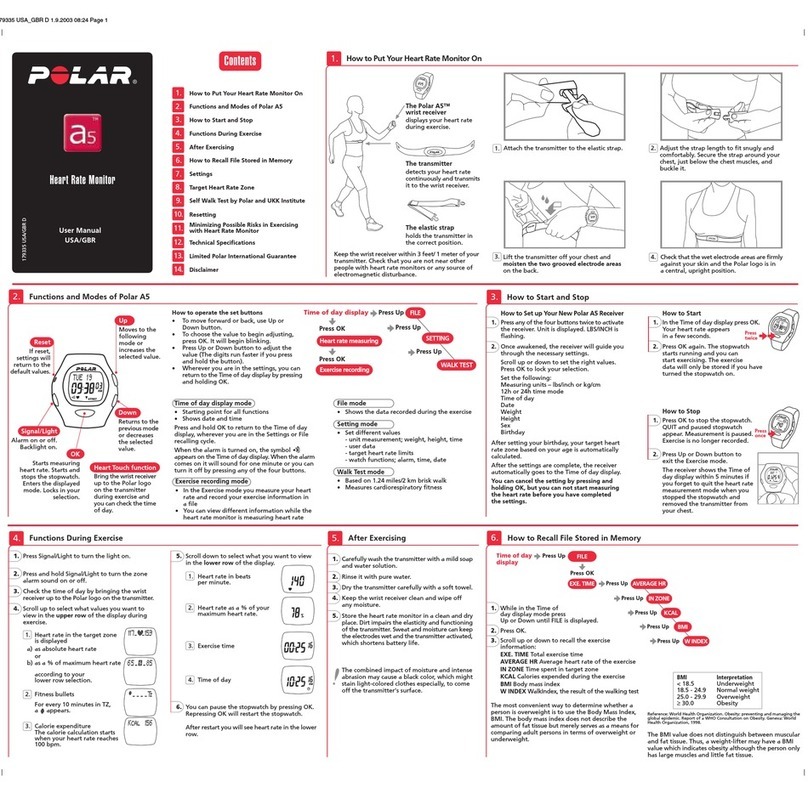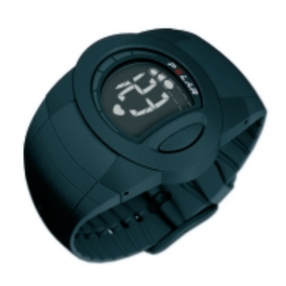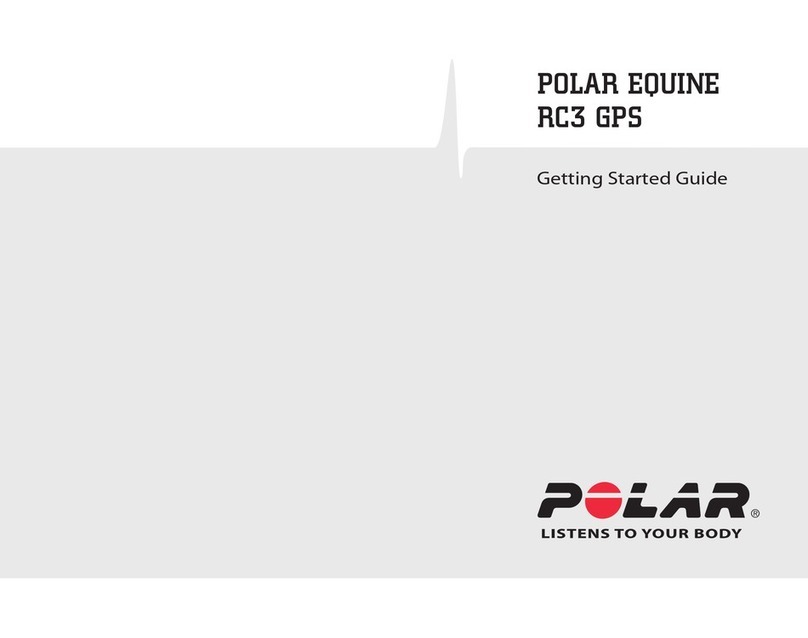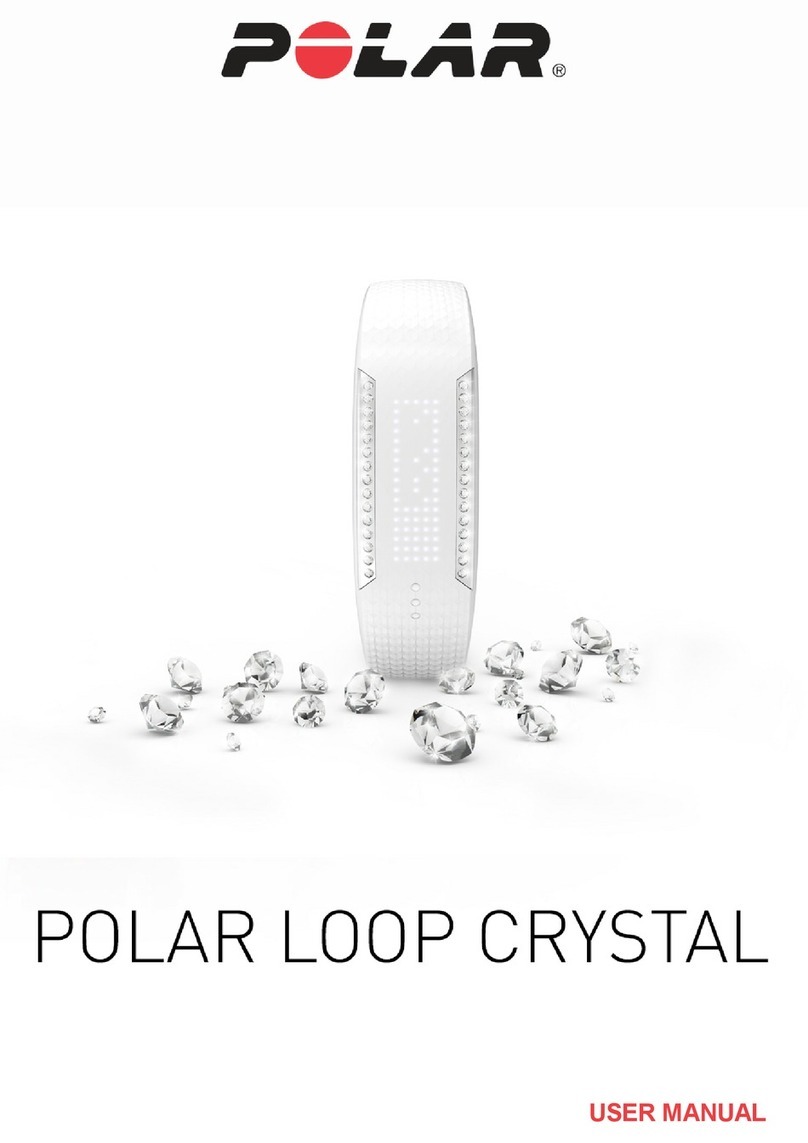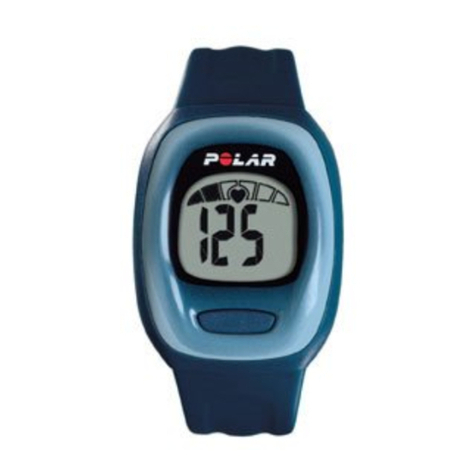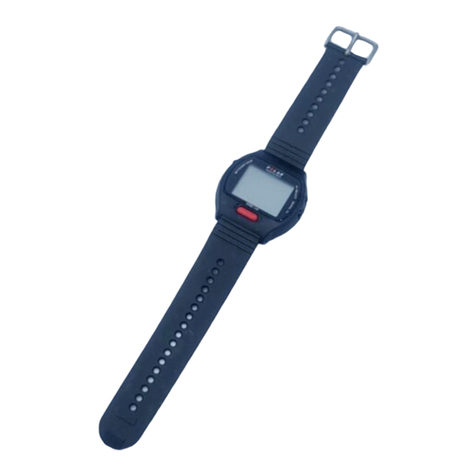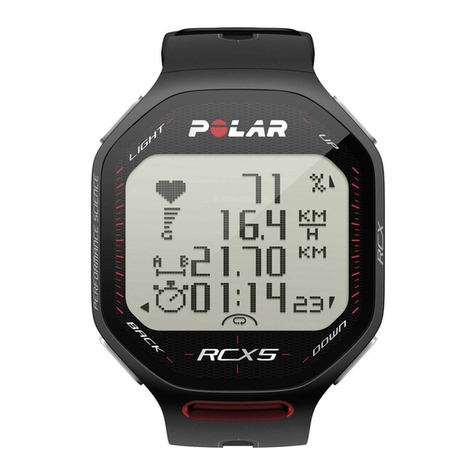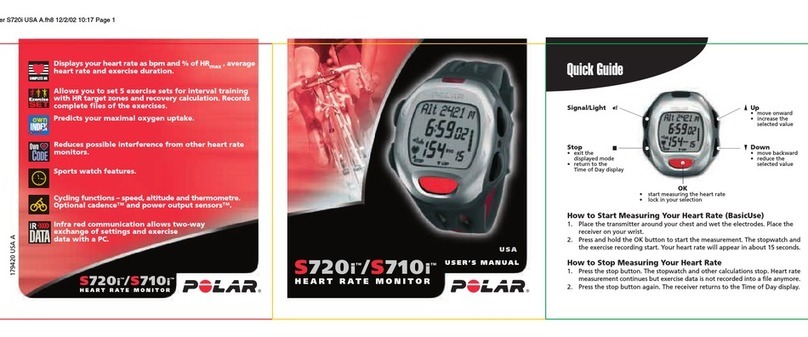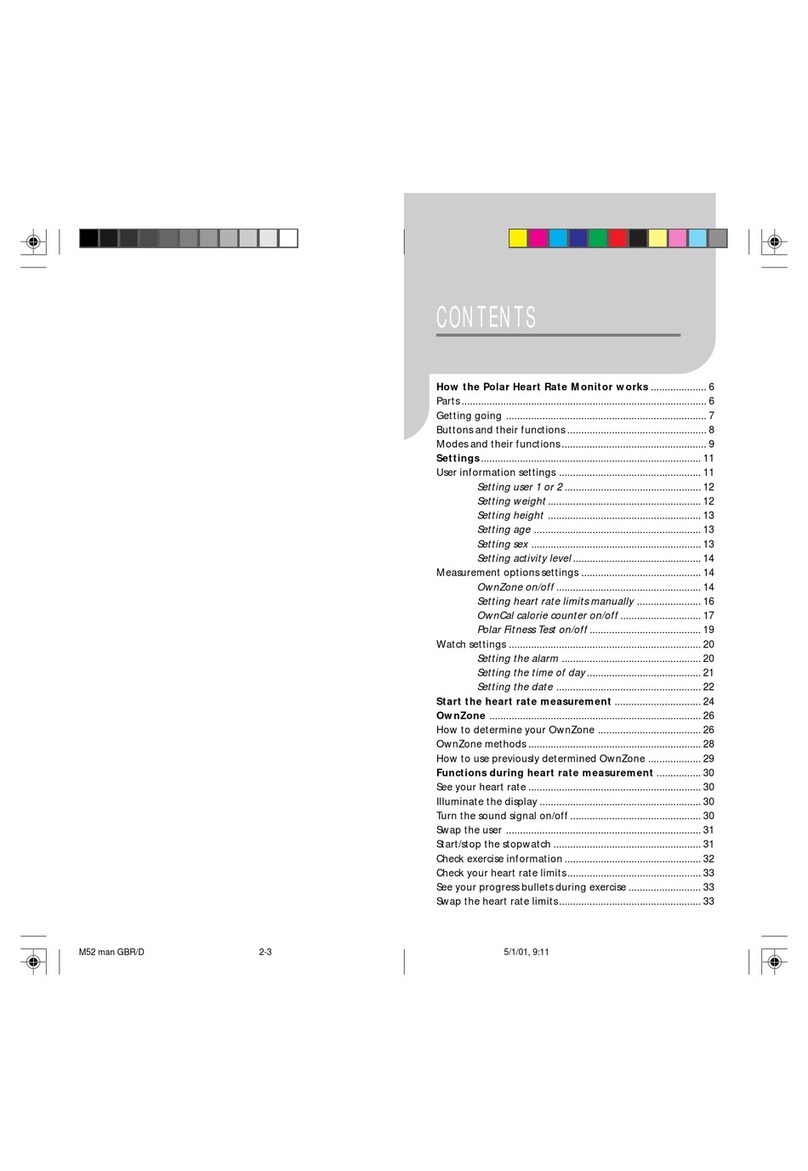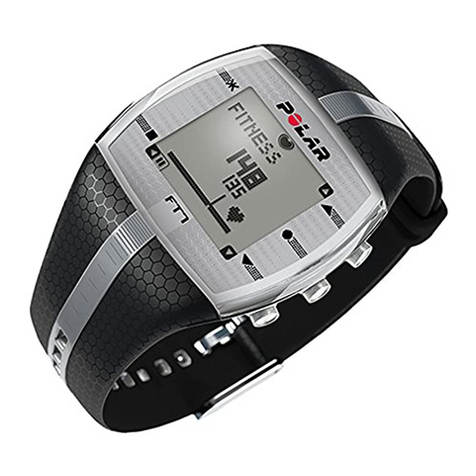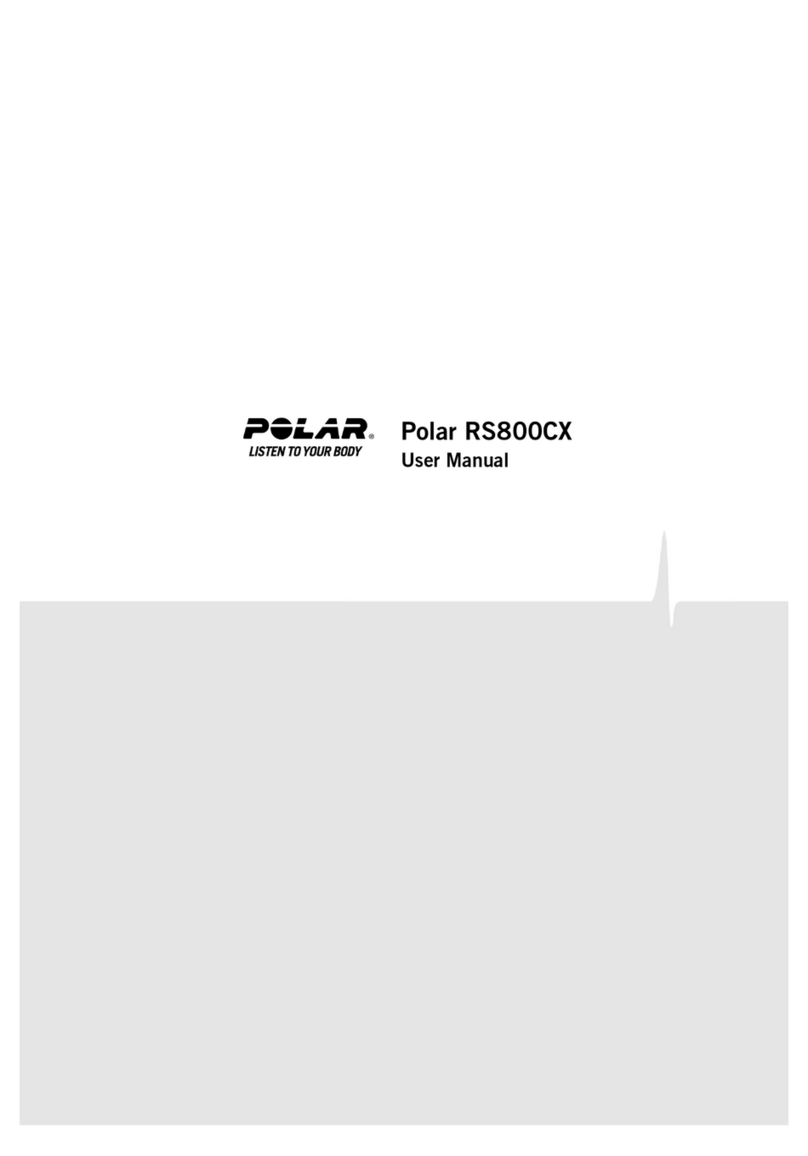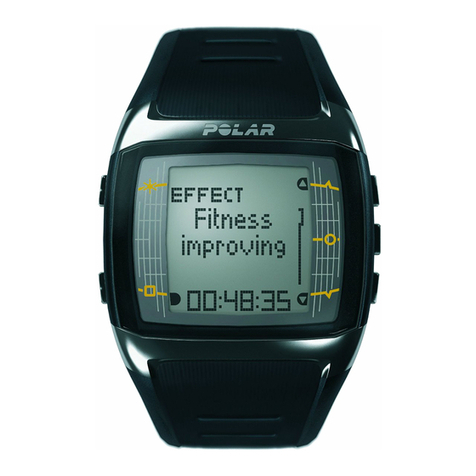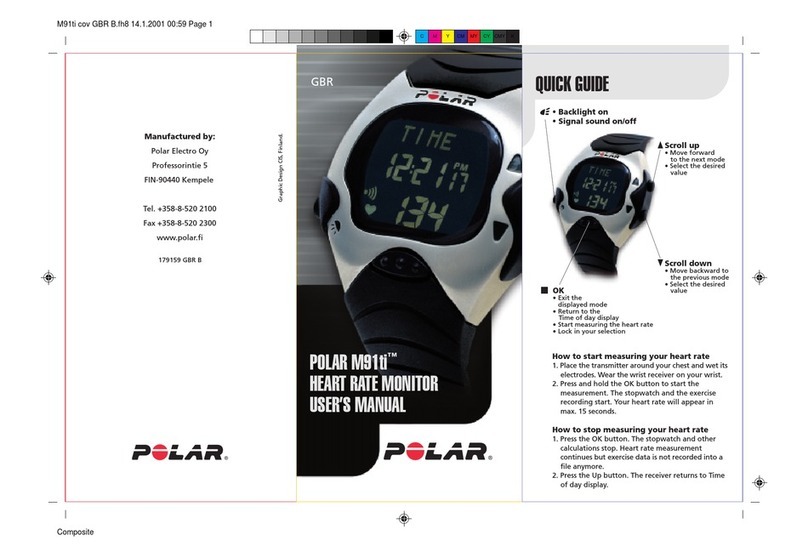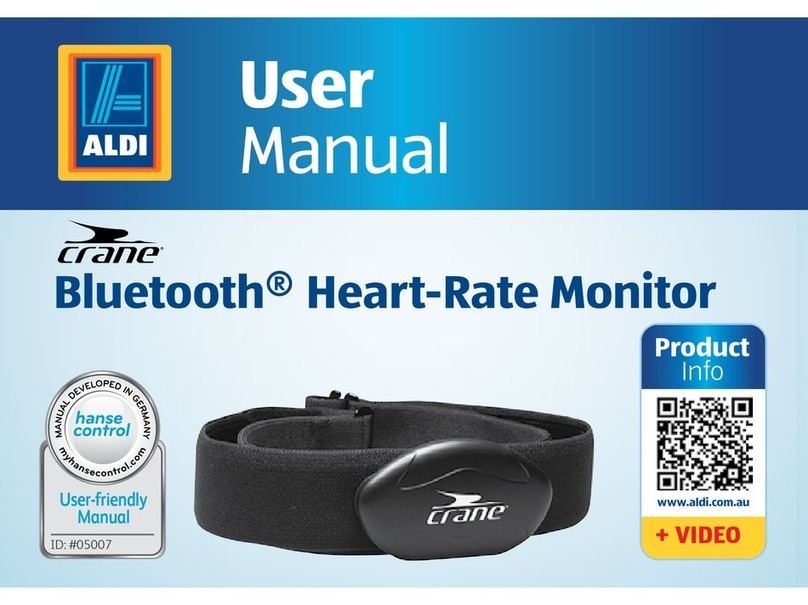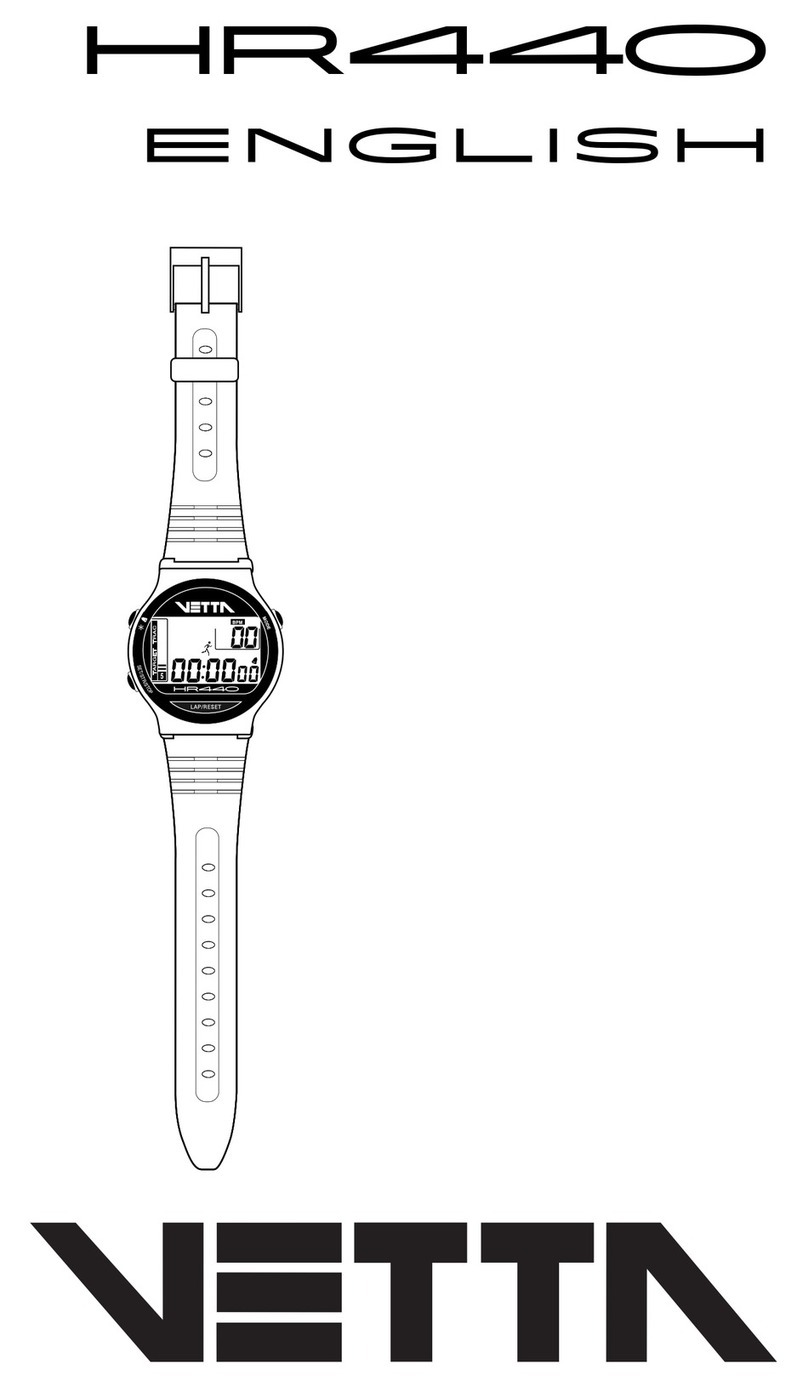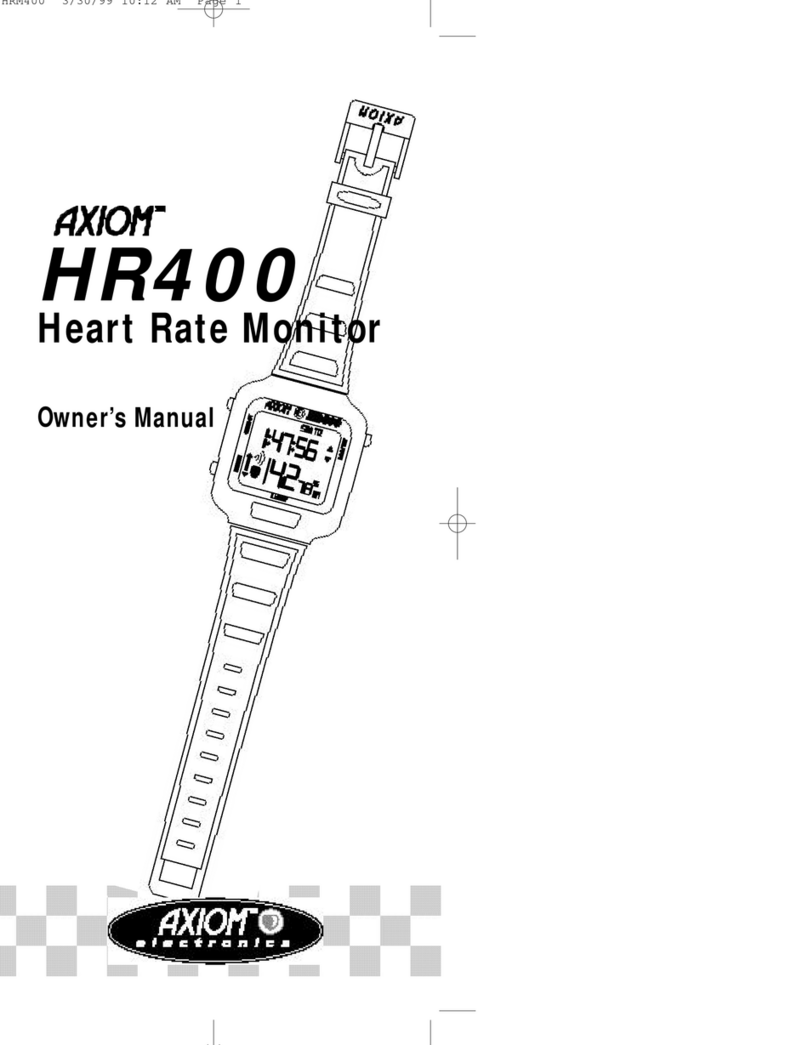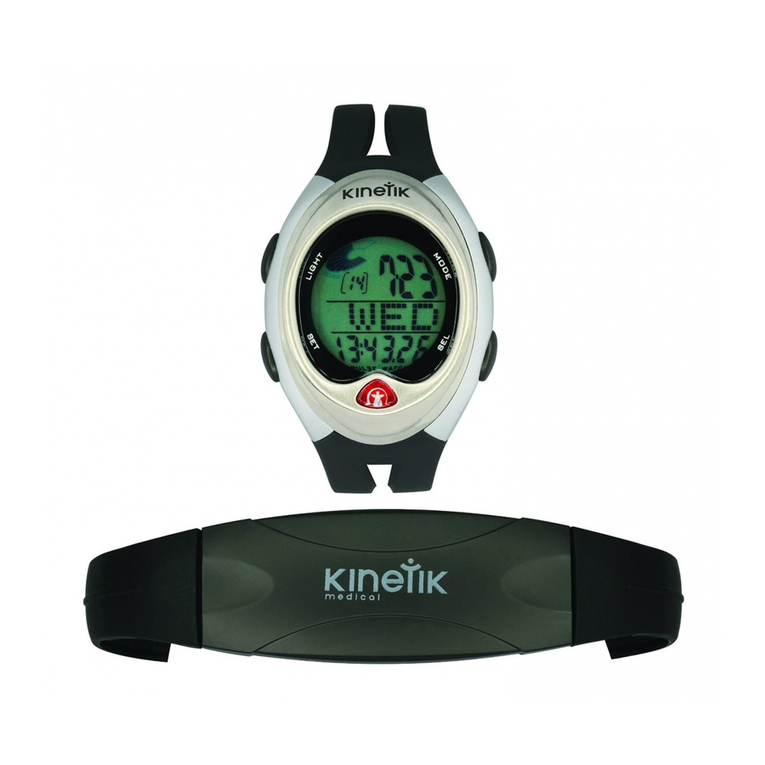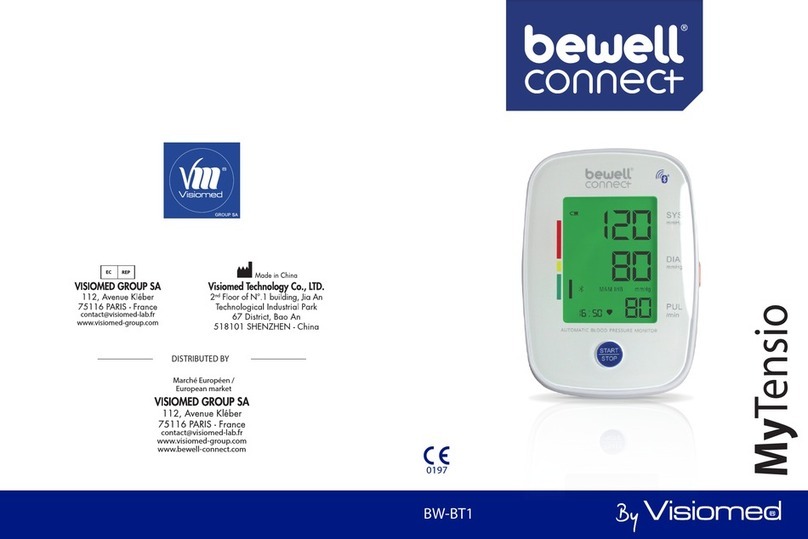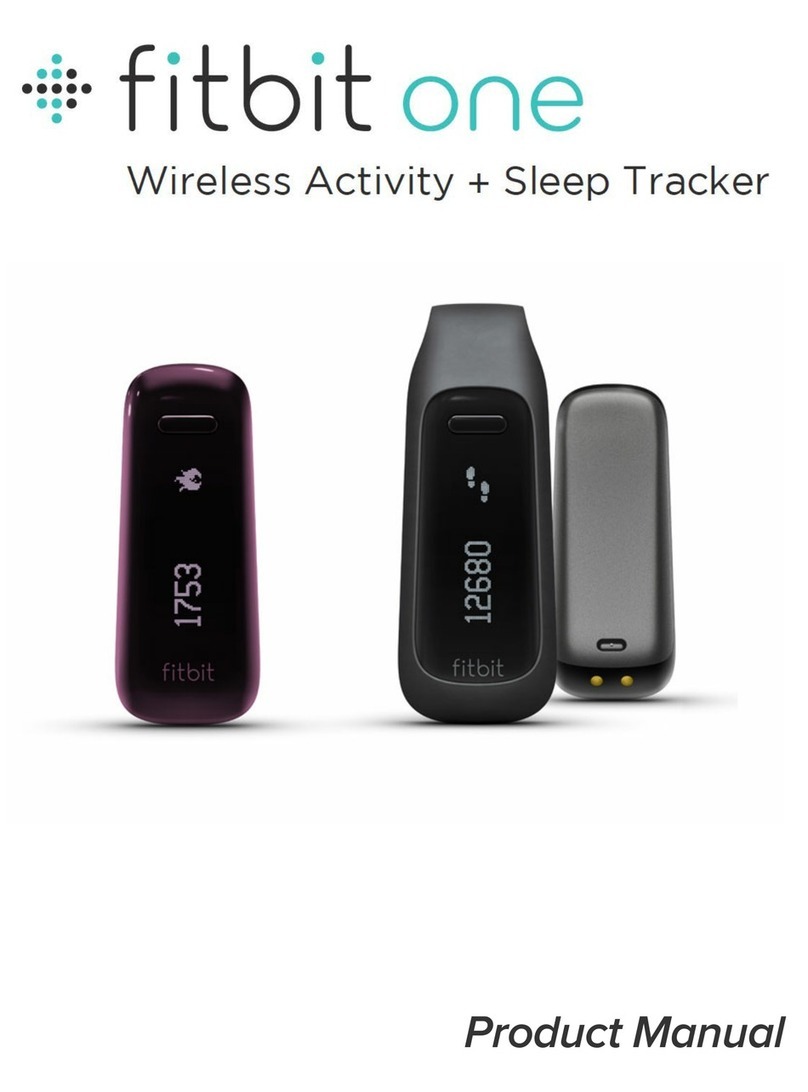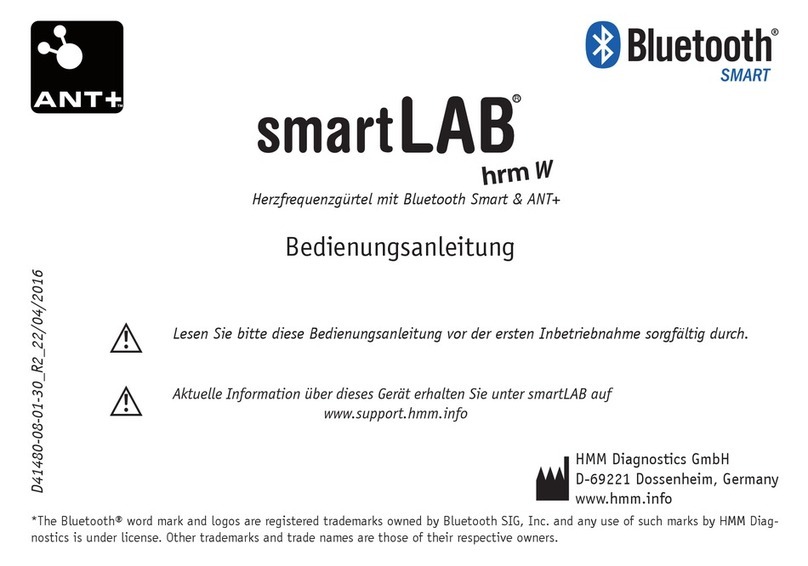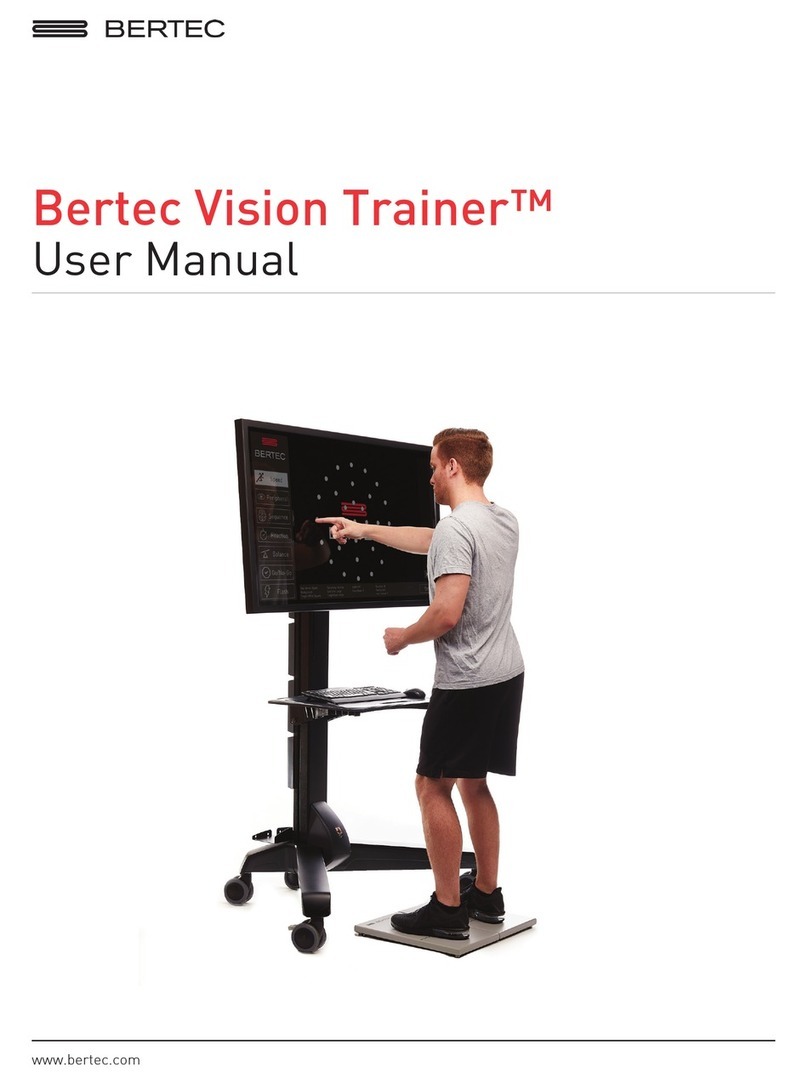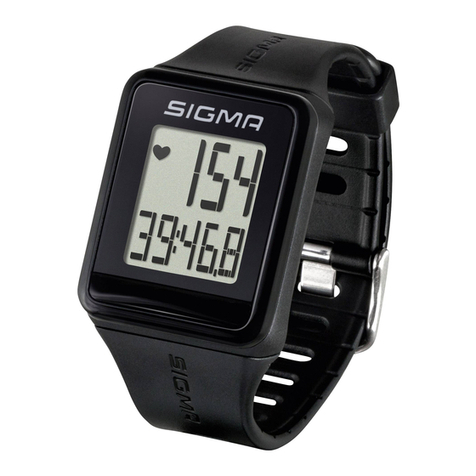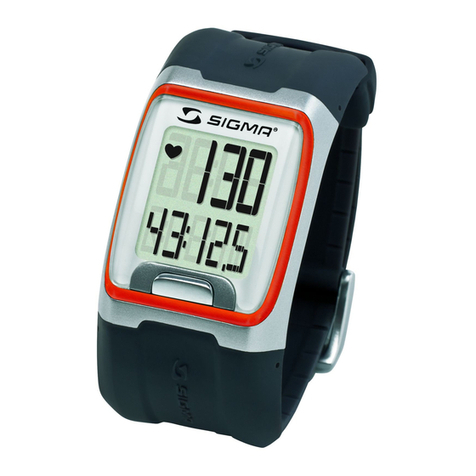A1 USA B 27/2/01 8:02 Page 2
Composite
C M Y CM MY CY CMY K
To find your target heart rate zone, you need
to know your maximum heart rate (HRmax).
To estimate your HRmax, use the following
formula:
HRmax = 220 – age
Your HRmax = 220 – ______ = ________
For a more accurate measurement, visit your
doctor for an exercise stress test.
Your target heart rate zone is a high and low
range which represents percentages of your
current HRmax.
When your heart beats at 50-60% of your
HRmax, you're in the light intensity zone.
This kind of exercise is easy (a walk,
for instance), but already delivers some
health benefits.
Push on to 60-70% of your HRmax and you're
in the light to moderate intensity zone.
This is good for improving fitness, building
endurance and recommended for weight loss.
At 70-85% of your HRmax, you've moved into
the moderate to heavy intensity zone. This is
harder work, but good for strengthening your
aerobic fitness.
Find out your target zones:
Light intensity:
upper limit 0.60 x your HRmax =
lower limit 0.50 x your HRmax =
Light to moderate intensity:
upper limit 0.70 x your HRmax =
lower limit 0.60 x your HRmax =
Moderate to heavy intensity:
upper limit0.85 x your HRmax =
lower limit 0.70 x your HRmax =
We recommend having all service done by an authorized
Polar Service Center. Warranty does not cover damage
or consequential damage caused by service not
authorized by Polar Electro Inc. Water resistance
cannot be guaranteed after an unauthorized service.
However, if you wish to use a local watch shop or battery
replacement center or to change the battery yourself,
please follow these instructions.
You need the following equipment:
• Battery type: Panasonic CR 2025, 3V Li
• Piece of dust-free pad
• Small Philips or standard screwdriver
• Plastic tweezers (recommended)
1. Put the wrist receiver on a clean, dust-free pad
on an even table surface and open the back cover
by removing the screws counterclockwise.
Do not turn the receiver upside down since the module
may fall off.
2. Push the spring gently. Lift the spring gently upwards
and release the other end of the spring, too.
3. Take the old battery off and put a new battery in the
battery housing + side up, using plastic tweezers.
Do not use metal tweezers because they may
shortcircuit the battery. Note also that bare fingers
cause grease and contaminate the battery, which
weakens the contact.
4. Assemble the plate back in reverse order, placing the
rotating joint properly in the slot. Press the spring
gently so that it locks the battery in its proper position.
5. Reset the receiver by pressing the reset spring against
the round golden pad for 1 second.
6. Check the display. All digits are displayed.
7. Make sure that the sealing ring is not damaged and
it is in its groove all the way around the housing.
8. Put the back cover in its place. The Polar logo
on the outside of the back cover is in the upright
position with respect to the buckle side of
the wrist strap.
9. Tighten the screws from opposite corners. Do not
force the screws or damage the existing threads.
Check that the sealing ring has stayed in its groove
and it is not showing from the joint.
10.Test the functioning. Mount the transmitter and
wet its electrodes. Start heart rate measurement
by pressing the button. In case the heart rate
measurement does not start or all segments
do not appear normally, reopen the case and
go back to the point 5, reset the receiver.
1.
2.
Target Heart Rate Zone
5. When Battery Runs Out
6.
All Polar heart rate monitors are designed to indicate
the level of physiological strain and intensity in sports and
exercise. No other use is intended or implied. Heart rate
is displayed as number of heartbeats per minute (bpm).
Polar Transmitter
Battery type: Built-in Lithium Cell
Battery life: Average 2500 hours of use
Operating temperature: 14 °F to 122 °F / -10 °C to +50 °C
Material: Polyurethane
Elastic Strap
Buckle material: Polyurethane
Fabric material: Nylon, polyester and natural rubber
including a small amount of latex
Wrist Receiver
Battery type: CR 2025
Battery life: Average 2 years (2h/day, 7 days/week)
Operating temperature: 14 °F to 122 °F / -10 °C to +50 °C
Water resistance: to 100 feet/30 meters
Wrist strap: Polyurethane
Wrist strap buckle: Polyoxymethylene
Back cover: Stainless steel complying with the EU Directive
94/27/EU and its amendment 1999/C 205/05 on the release
of nickel from products intended to come into direct and
prolonged contact with the skin.
Accuracy of heart rate measurement: ±1% or ±1 bpm,
whichever larger, definition applies to steady state
conditions
Total exercise time: .....................................9 h 59 min
Exercise time display < 1 h:.........................mm:ss
Exercise time display > 1 h:.........................hh:mm
Minimum duration of recorded exercise: ..1 min
Technical Specifications Limited Polar Warranty
• Polar Electro Inc. warrants to the original consumer/
purchaser of this heart rate monitor that the product
will be free from defects in material or workmanship
for one year from the date of purchase.
Please keep the receipt which is your proof of purchase!
• Polar transmitter is covered by a two year maintenance
free warranty.
• Warranty does not cover receiver battery, damage due
to misuse, abuse, accidents or negligence of the
precautions; improper maintenance, commercial use,
cracked or broken cases.
• Warranty does not cover damage or consequential
damage caused by service not authorized by
Polar Electro Inc.
• During the warranty period the product will be either
repaired or replaced at an authorized service center
free of charge.
• This warranty does not affect the consumer’s statutory
rights under applicable national or state laws in force, or
the consumer’s rights against the dealer arising from their
sales/purchase contract.
Copyright © 2001 Polar Electro Oy, 90440 Kempele, Finland
All rights reserved. No part of this manual may be used
or reproduced in any form or by any means without prior
written permission of Polar Electro Oy.
Polar logotype is a registered trademark and Polar A1 is a
trademark of Polar Electro Oy.
This product is protected by one or several of the following
patents: FI 88223, DE 4215549, FR 92.06120, GB 2257523,
HK 113/1996, SG 9591671-4, US 5491474, FI 88972,
FR 92.09150, GB 2258587, HK 306/1996, SG 9592117-7,
US 5486818, FI 96380, US 5611346, EP 665947, DE 69414362,
FI 68734, DE 3439238, GB 2149514, HK 812/1989, US 4625733,
FI 100924, FI 100452, US 5840039, FI 4150, FI 4069,
DE 29910633, FI 104463.
Other patents pending.
Disclaimer
• The material in this manual is for informational purposes
only. The products it describes are subject to change
without prior notice, due to the manufacturer’s
continuous development program.
• Polar Electro Inc. makes no representations or warranties
with respect to this manual or with respect to the
products described herein. Polar Electro Inc. shall not be
liable for any damages, direct or incidental, consequential
or special, arising out of, or related to the use of this
material or the products described herein.
Polar Electro Inc.
370 Crossways Park Drive
Woodbury NY 11797-2050
U.S.A.
Polar Service Center:
1-800-227-1314
Polar Electro Canada
c/o Sport Dinaco Inc.
4330 Joseph-Dubreuil
Lachine, Quebec
CANADA, H8T 3C4
1-888-918-5043
www.polarusa.com
Exercise may include some risk, especially for those who
have been sedentary. To minimize possible risks consider
the following advice:
Before beginning a regular exercise program consult
your doctor
• if you are over 40 years of age and have not been
following a regular exercise program during
the past 5 years
• if you smoke
• if you have high blood pressure
• if you have high blood cholesterol
• if you have any signs or symptoms of any disease
• if you are recovering from a serious illness or
a medical treatment e.g. surgery
• if you use a pacemaker or another implanted
electronic device.
Note that in addition to exercise intensity, heart, circulation
(particularly high blood pressure), asthma and other breathing
medications as well as some energy drinks, alcohol and nicotine,
can affect the heart rate.
It is important to be sensitive to your body’s reactions during
exercise. If you feel unexpected pain or excessive fatigue when
exercising, it is recommended to stop the exercise or continue
at a lighter intensity.
If you are allergic to any substance that comes into contact
with the skin, check the Polar heart rate monitor materials
from the ‘Technical specifications’ chapter. It is recommended
that you wear the transmitter against your bare skin to ensure
flawless operation. However, if you wish to wear the transmitter
over a shirt, moisten the shirt well under the electrodes.
Notice to persons with pacemakers, defibrillator or other
implanted electronic device.
Persons who have a pacemaker use the Polar heart rate monitor
at their own risk. Before starting use, we always recommend
an exercise test under doctor’s supervision.
The test is to ensure the safety and reliability of the simultaneous
use of the pacemaker and the heart rate monitor.
Minimizing Possible Risks in Exercising
with Heart Rate Monitor
7. 8. 9. 10.
2.1.
Reference: American College of Sports Medicine. ACSM’s Guidelines
for Exercise Testing and Prescription. Williams & Wilkins, 1995.


